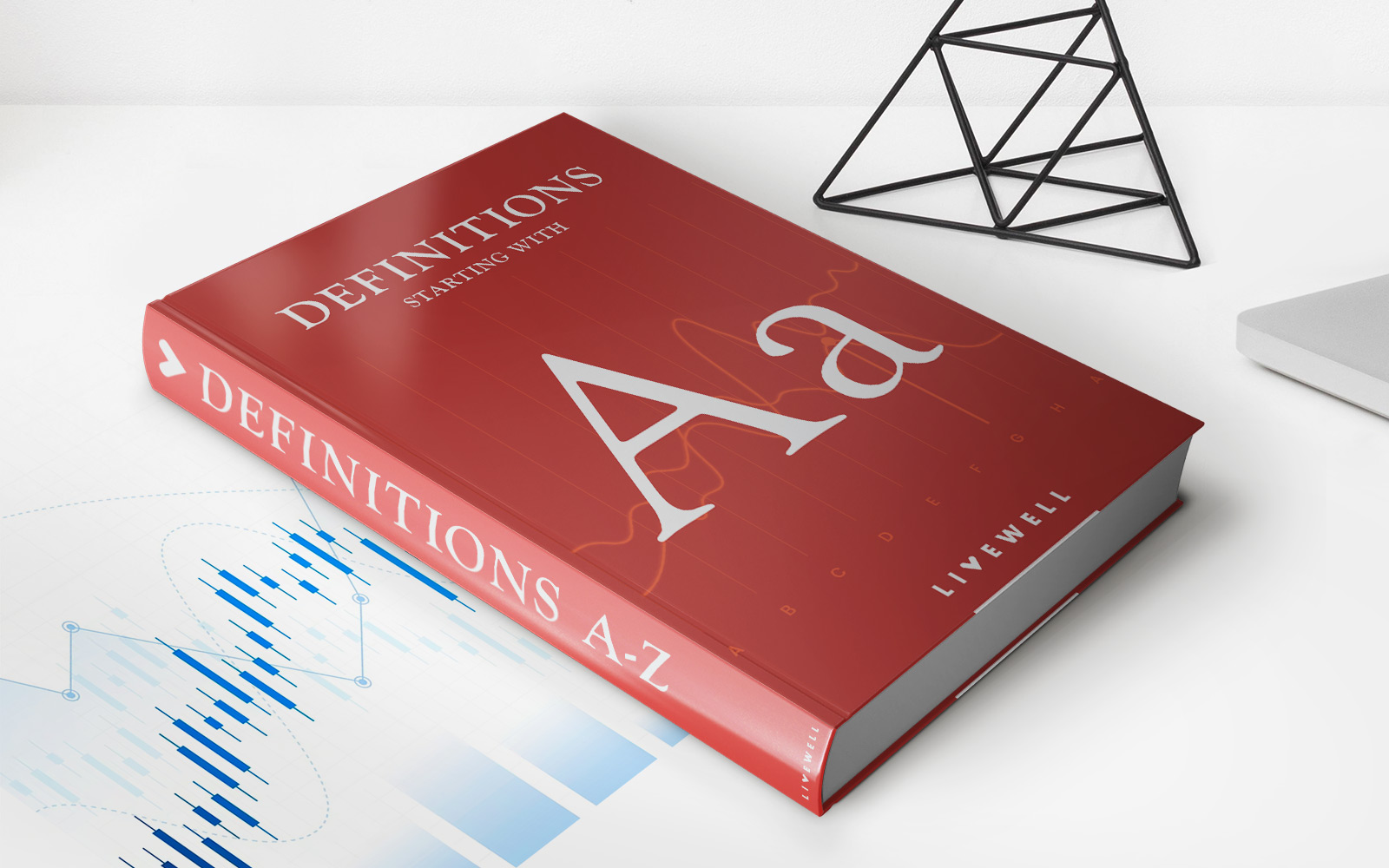

Finance
What Is An Elective Deferral 401K
Published: October 17, 2023
Learn about elective deferral 401K contributions in finance and how they can help you save for retirement. Gain insight into this popular retirement savings option.
(Many of the links in this article redirect to a specific reviewed product. Your purchase of these products through affiliate links helps to generate commission for LiveWell, at no extra cost. Learn more)
Table of Contents
- Introduction
- What is a 401(k) Plan?
- What is an Elective Deferral?
- How Does Elective Deferral Work in a 401(k) Plan?
- Benefits of Elective Deferral in a 401(k) Plan
- Tax Implications of Elective Deferrals
- Contribution Limits for Elective Deferrals
- Considerations for Elective Deferral in 401(k) Plans
- Conclusion
Introduction
Welcome to the world of 401(k) plans and elective deferrals! If you’re unfamiliar with these terms, don’t worry – by the end of this article, you’ll have a clear understanding of what they mean and how they work. Whether you’re a finance professional, an HR manager, or just an individual looking to make smart decisions about your retirement savings, this article will provide you with the knowledge you need.
A 401(k) plan is a retirement savings plan offered by employers to their employees. It allows employees to contribute a portion of their pre-tax income to a retirement account, which can be invested in a variety of assets such as stocks, bonds, and mutual funds. The contributions and investment returns grow tax-deferred until the employee reaches retirement age and starts withdrawing the funds.
Now, let’s dive into the concept of elective deferrals. An elective deferral refers to the amount of money an employee chooses to contribute to their 401(k) plan from their salary. It is called “elective” because it is voluntary and can be adjusted by the employee.
Elective deferrals in a 401(k) plan allow employees to take control of their retirement savings. By setting aside a portion of their income before taxes, employees can potentially reduce their current taxable income while simultaneously saving for their future. It’s like a win-win situation!
In the following sections, we will explore how elective deferrals work in a 401(k) plan, the benefits they provide, the tax implications they have, the contribution limits to be aware of, and important considerations to keep in mind. So, let’s get started and unravel the mysteries of elective deferrals in 401(k) plans!
What is a 401(k) Plan?
A 401(k) plan is a type of employer-sponsored retirement savings plan that allows employees to save and invest a portion of their pre-tax income for retirement. It gets its name from the section 401(k) of the Internal Revenue Code, which outlines the rules and regulations for these types of plans.
Employers set up 401(k) plans to encourage their employees to save for retirement by offering them a convenient and tax-advantaged way to do so. These plans provide a range of investment options, such as mutual funds, stocks, bonds, and more, allowing employees to grow their savings over time.
One of the significant advantages of a 401(k) plan is that contributions are made on a pre-tax basis. This means that the money an employee contributes is deducted from their taxable income for the year, reducing their overall tax liability. For example, if an employee earns $50,000 per year and contributes $5,000 to their 401(k), they will only pay taxes on $45,000 of their income.
Furthermore, many employers offer matching contributions as part of their 401(k) plans. This means that for every dollar an employee contributes, the employer will match a portion of that amount, up to a certain percentage or limit. This employer match is essentially free money that helps boost employees’ retirement savings.
Another advantage of 401(k) plans is that they allow employees to defer paying taxes on their investment earnings until they withdraw the money during retirement. This tax-deferred growth can substantially increase the value of their savings over time.
It’s important to note that 401(k) plans have eligibility requirements, which vary among employers. Some employers offer 401(k) plans to all employees, while others may impose a waiting period or require employees to meet certain criteria. It’s always a good idea to check with your HR department to determine if you are eligible to participate in your company’s 401(k) plan.
In summary, a 401(k) plan is an employer-sponsored retirement savings plan that allows employees to save and invest a portion of their pre-tax income for retirement. With its tax advantages, employer matching contributions, and investment flexibility, a 401(k) plan is an invaluable tool for individuals looking to secure their financial future.
What is an Elective Deferral?
An elective deferral refers to the amount of money an employee chooses to contribute to their 401(k) plan from their salary. It is called “elective” because it is voluntarily elected by the employee, meaning they have the freedom to decide how much they want to contribute and can adjust it over time within certain limits.
When an employee decides to participate in their employer’s 401(k) plan and make contributions, they have the option to defer a portion of their salary before taxes are withheld. This means that the money they contribute is not subject to federal income tax (and in most cases, state and local taxes) at the time of contribution.
Let’s say an employee earns $60,000 per year and decides to contribute 10% of their income to their 401(k) plan. This would result in an elective deferral of $6,000 per year. Since the contribution is made before taxes, the employee’s taxable income for the year would be reduced to $54,000.
It’s worth noting that elective deferrals are subject to certain limits set by the Internal Revenue Service (IRS). These limits determine the maximum amount an individual can contribute to their 401(k) plan on an annual basis.
Elective deferrals are deducted from an employee’s income and deposited into their 401(k) account, where they can be invested in various assets such as stocks, bonds, and mutual funds. The investment returns on these contributions grow tax-deferred, meaning they are not subject to taxes until the employee starts to withdraw the funds during their retirement years.
Employees typically have the flexibility to choose the percentage or the dollar amount they want to contribute as an elective deferral. Some may opt to contribute a specific percentage of their salary while others prefer a fixed dollar amount. It’s important to review the plan documents provided by the employer to understand the available options and any additional rules or restrictions that may apply.
One key aspect of elective deferrals is that they can be changed or adjusted over time. Employees can increase or decrease the amount they contribute based on their financial situation or personal preferences. This flexibility allows individuals to adapt their retirement savings strategy as their circumstances evolve.
In summary, an elective deferral refers to the employee’s voluntary contribution to their 401(k) plan from their salary. These contributions are made before taxes, reducing the employee’s taxable income for the year. The money is deposited into their 401(k) account, where it can be invested and grow tax-deferred until retirement. With the ability to adjust the contribution amount and the tax advantages it offers, elective deferrals play a vital role in individuals’ retirement savings journey.
How Does Elective Deferral Work in a 401(k) Plan?
Elective deferral is a fundamental component of a 401(k) plan, and understanding how it works is essential for maximizing the benefits of the plan. Let’s break down the process of how elective deferrals function in a 401(k) plan.
1. Employee Enrollment: The first step is for the employee to enroll in the employer’s 401(k) plan. This typically involves completing relevant paperwork provided by the employer’s human resources department.
2. Deferral Election: Once enrolled, the employee has the opportunity to elect the amount they want to contribute from their salary as an elective deferral. This can be expressed as a percentage of their income or a fixed dollar amount. The elected deferral amount will be deducted from the employee’s paycheck on a pre-tax basis.
3. Payroll Deductions: The employer’s payroll system will automatically deduct the elected deferral amount from the employee’s gross income before income taxes are withheld. This reduces the employee’s taxable income, resulting in potential tax savings.
4. Account Deposits: The deducted deferral amount will be deposited into the employee’s 401(k) account. The frequency of these deposits can vary depending on the employer’s payroll schedule.
5. Investment Options: Once the deferrals are deposited into the 401(k) account, the employee can allocate their contributions among the available investment options offered by the plan. These options may include various mutual funds, stocks, bonds, or target-date funds. The employee’s investment choices should align with their risk tolerance and long-term financial goals.
6. Tax-Deferred Growth: The deferrals, along with any earnings on investments, grow on a tax-deferred basis within the 401(k) account. This means that the contributions and investment gains are not subject to taxes until the employee initiates a withdrawal from the account, typically during retirement.
7. Employer Matching: In some cases, employers may offer a matching contribution to incentivize employee participation in the 401(k) plan. The matching formula varies but often involves the employer matching a percentage of the employee’s elective deferrals, up to a certain limit. This matching contribution amplifies the employee’s savings potential and is an attractive benefit provided by many employers.
8. Account Management: Employees can monitor and manage their 401(k) account, including making changes to their elective deferral amount, investment allocations, and beneficiary designations. Regular review of the account, adjusting contributions based on life circumstances and financial goals, is recommended to ensure the account remains aligned with long-term retirement plans.
9. Withdrawal at Retirement: When the employee reaches retirement age (as defined by the plan), they can begin withdrawing funds from their 401(k) account. Withdrawals are subject to income taxes at the individual’s tax rate at the time of withdrawal. It’s important to note that early withdrawals before the designated retirement age may incur penalties and taxes.
In summary, elective deferral in a 401(k) plan allows employees to contribute a portion of their pre-tax income to their retirement savings. The elected deferral amount is deducted from their paycheck, deposited into their 401(k) account, and invested in various options. The contributions and investment earnings grow tax-deferred until retirement, providing a valuable savings opportunity for the future.
Benefits of Elective Deferral in a 401(k) Plan
Elective deferral in a 401(k) plan offers several benefits to employees, making it a valuable tool for building long-term retirement savings. Let’s explore some of the key advantages:
1. Tax Advantages: One of the primary benefits of elective deferrals is the potential for significant tax savings. By contributing to a 401(k) plan through elective deferrals, employees reduce their taxable income. The money contributed is deducted from their salary before income taxes are calculated, resulting in lower overall tax liability. This can provide immediate tax benefits and potentially put employees in a lower tax bracket.
2. Employer Matching Contributions: Many employers offer matching contributions as part of their 401(k) plans. This means that for every dollar an employee contributes through elective deferrals, the employer will contribute a certain percentage. This employer match is essentially free money and instantly boosts the employee’s retirement savings. For example, if an employer offers a 50% match on up to 5% of an employee’s salary, an employee making a 5% elective deferral will receive an additional 2.5% in matching contributions.
3. Retirement Readiness: By participating in a 401(k) plan and making elective deferrals, employees take an active role in preparing for retirement. Regular contributions over time can help individuals build a substantial nest egg and provide financial security in their golden years. Elective deferrals provide a disciplined approach to saving and instill the habit of prioritizing retirement readiness.
4. Tax-Deferred Growth: Another advantage of elective deferral in a 401(k) plan is the potential for tax-deferred growth. The contributed amount, along with any investment returns, grows within the 401(k) account without being subject to taxes. This enables the savings to compound over time, potentially resulting in a more significant retirement fund when withdrawals begin.
5. Diversification and Investment Options: 401(k) plans typically offer a range of investment options, such as stocks, bonds, mutual funds, or target-date funds. By participating through elective deferrals, employees have the opportunity to diversify their retirement savings across different asset classes, spreading risk and increasing the likelihood of favorable returns. The availability of various investment options allows individuals to align their investment strategy with their risk tolerance and long-term goals.
6. Portability: If an employee changes jobs, they can often roll over their accumulated savings from the previous employer’s 401(k) plan into their new employer’s plan or an Individual Retirement Account (IRA). This means that the retirement savings built through elective deferrals can continue to grow and benefit from tax advantages, even with a change in employment.
7. Automatic Savings: Elective deferrals operate on a pre-tax basis, meaning the contribution is deducted from the employee’s paycheck before they receive it. This automatic savings mechanism helps individuals save consistently without having to think about it. By making contributions through payroll deductions, employees develop a habit of saving and accumulate funds for retirement without actively needing to set aside money each month.
In summary, elective deferral in a 401(k) plan offers numerous benefits to employees. These include tax advantages, employer matching contributions, the opportunity for tax-deferred growth, a diverse range of investment options, portability, and the convenience of automatic savings. By taking advantage of elective deferrals, employees can enhance their retirement readiness and work towards a financially secure future.
Tax Implications of Elective Deferrals
Understanding the tax implications of elective deferrals in a 401(k) plan is crucial for individuals seeking to maximize their retirement savings. Let’s delve into the key tax considerations when it comes to elective deferrals:
1. Pre-Tax Contributions: When employees make elective deferrals to their 401(k) plan, the contributed amount is deducted from their salary before income taxes are calculated. This means that the money contributed through elective deferrals is not included in their taxable income for the year. As a result, employees may experience a reduction in their overall tax liability, potentially putting them in a lower tax bracket.
2. Tax-Deferred Growth: Another tax advantage of elective deferrals is that the contributions, along with any investment returns, grow within the 401(k) account on a tax-deferred basis. This means that individuals do not have to pay taxes on the contributed amount or the earnings until they begin withdrawing funds from the account, usually during retirement. The ability to delay taxes allows savings to compound over time, potentially resulting in a larger retirement fund.
3. Income Taxes upon Withdrawal: When individuals withdraw funds from their 401(k) account, typically during retirement, the withdrawn amount is subject to income tax. This means that the money withdrawn is treated as ordinary income and taxed at the individual’s applicable tax rate at that time. It’s important to note that if individuals withdraw funds before reaching the age of 59 ½, they may also face an early withdrawal penalty in addition to income taxes, unless certain exceptions apply.
4. Required Minimum Distributions (RMDs): The IRS mandates that individuals begin taking required minimum distributions (RMDs) from their 401(k) account once they reach the age of 72 (or 70 ½ for individuals born before July 1, 1949). RMDs represent the minimum amount that must be withdrawn annually to satisfy IRS regulations. The withdrawn amount is subject to income tax, ensuring that individuals gradually distribute and pay taxes on their tax-deferred savings.
5. Roth 401(k) Option: While elective deferrals are typically made on a pre-tax basis, some employers offer a Roth 401(k) option. With a Roth 401(k), contributions are made with after-tax dollars, meaning the employee does not receive an immediate tax deduction. However, qualified withdrawals from a Roth 401(k) account, including both contributions and earnings, are tax-free. This can provide individuals with tax-free income during retirement, as long as certain requirements are met.
6. Contribution Limits: The IRS sets annual contribution limits for elective deferrals in 401(k) plans. These limits are subject to change and vary depending on factors such as age and income level. It’s crucial for individuals to be aware of these limits to ensure compliance and determine the maximum amount they can contribute on a pre-tax basis.
7. Tax Diversification Strategy: Understanding the tax implications of elective deferrals can help individuals develop a tax diversification strategy in retirement. By having a mix of tax-deferred savings (such as traditional 401(k) contributions) and tax-free savings (such as Roth IRA contributions), individuals can have flexibility when it comes to managing their taxable income during retirement and potentially minimizing their tax burden.
It’s important to consult with a tax advisor or financial professional to fully understand the specific tax implications of elective deferrals and how they may affect an individual’s overall financial situation. By making informed decisions, individuals can optimize their retirement savings strategy and navigate the tax landscape effectively.
Contribution Limits for Elective Deferrals
When it comes to making elective deferrals to a 401(k) plan, there are specific contribution limits set by the Internal Revenue Service (IRS). These limits dictate the maximum amount that individuals can contribute on a pre-tax basis. Let’s explore the contribution limits for elective deferrals:
For the year 2021, the IRS has set the base contribution limit for elective deferrals at $19,500. This means that individuals can contribute up to $19,500 from their salary to their 401(k) plan through elective deferrals. However, it’s important to note that additional catch-up contributions may be allowed for individuals who are age 50 or older.
Catch-up contributions enable individuals closer to retirement age to save more aggressively and make up for any previous savings shortfalls. For the year 2021, the catch-up contribution limit for individuals aged 50 or older is an additional $6,500. This brings the total maximum contribution limit, including catch-up contributions, to $26,000.
It’s essential for individuals to be aware of these limits and determine the maximum amount they can contribute to their 401(k) plan. Exceeding the contribution limits can result in potential tax implications and penalties.
It’s worth noting that these limits apply specifically to elective deferrals and do not include any employer matching contributions or other employer-provided contributions.
Additionally, it’s important to keep in mind that contribution limits are subject to change. The IRS may adjust these limits periodically to account for inflation and other factors. Therefore, individuals should stay informed about any updates to the contribution limits to ensure compliance with the latest regulations.
It’s also worth mentioning that contribution limits for elective deferrals are cumulative across all 401(k) plans an individual may contribute to. If an individual participates in multiple 401(k) plans (for example, from different employers), the combined total of their elective deferrals across all plans must not exceed the annual contribution limit.
Another factor to consider is that elective deferrals made to a traditional 401(k) plan may impact an individual’s ability to contribute to other types of retirement accounts, such as a Roth IRA. Depending on an individual’s income level and tax filing status, their eligibility to make contributions to a Roth IRA may be affected by their participation in a 401(k) plan. It’s important to review the specific rules and limitations for each retirement account type to make informed decisions.
In summary, contribution limits for elective deferrals in a 401(k) plan are set by the IRS and determine the maximum amount individuals can contribute on a pre-tax basis. The base contribution limit for 2021 is $19,500, with an additional catch-up contribution limit of $6,500 for individuals aged 50 or older. It’s essential to be aware of these limits, monitor any updates, and ensure compliance to make the most of your retirement savings opportunities.
Considerations for Elective Deferral in 401(k) Plans
When it comes to elective deferrals in a 401(k) plan, there are several important considerations that individuals should keep in mind. These considerations can help individuals make informed decisions and optimize their retirement savings strategy. Let’s explore some key factors to consider:
1. Financial Goals: Before determining the amount to contribute through elective deferrals, individuals should evaluate their financial goals. Assessing short-term and long-term financial needs can provide guidance on how much to contribute towards retirement savings. Balancing present financial obligations with future retirement goals is crucial to maintain a healthy financial outlook.
2. Employer Matching Contributions: If an employer offers a matching contribution for employee elective deferrals, individuals should aim to contribute enough to maximize the employer match. This matching contribution represents “free money” and can significantly boost retirement savings. Understanding the specific matching formula and requirements set by the employer is important to take full advantage of this benefit.
3. Other Retirement Savings Strategies: Elective deferrals are not the only retirement savings option available. Individuals may also consider making contributions to other retirement accounts, such as an Individual Retirement Account (IRA) or a Roth IRA. Assessing the benefits and limitations of different retirement savings vehicles can help diversify savings and optimize tax advantages.
4. Investment Options and Risk Tolerance: 401(k) plans typically offer a range of investment options. Understanding these options and assessing personal risk tolerance is essential. Conservative investors may opt for more stable investments, such as bonds or cash equivalents, while others may choose to invest more aggressively in stocks. Regularly reviewing and rebalancing investment allocations can ensure alignment with changing risk tolerances and market conditions.
5. Age and Timing: The age at which individuals begin making elective deferrals and the length of time until retirement should be taken into account. Starting early allows for more time to benefit from the power of compounding. However, even individuals closer to retirement can still make meaningful contributions and potentially take advantage of catch-up contributions for those aged 50 or older.
6. Regulatory Changes and Updates: It’s important to stay informed about any regulatory changes or updates regarding 401(k) plans and elective deferrals. The IRS periodically adjusts contribution limits and may introduce new rules or guidelines that impact retirement savings strategies. Staying up to date with these changes can help individuals make timely adjustments and ensure compliance.
7. Life Events and Financial Circumstances: Life events such as marriage, divorce, having children, or purchasing a home can impact an individual’s financial situation. During these times, adjusting elective deferrals may be necessary to accommodate changing needs. Regularly reassessing contributions based on changing circumstances can help individuals maintain an optimal savings rate.
8. Professional Financial Advice: Seeking guidance from a qualified financial advisor can provide valuable insights tailored to an individual’s specific financial situation and goals. Financial advisors can offer personalized advice, create retirement savings plans, and help individuals navigate complex retirement savings strategies.
By considering these factors, individuals can make informed decisions when it comes to elective deferrals in their 401(k) plans. Tailoring savings strategies to individual preferences, risk tolerance, and financial goals ensures that retirement savings remain on track and aligned with desired outcomes.
Conclusion
Elective deferrals in a 401(k) plan play a crucial role in individuals’ retirement savings journey. They provide employees with the opportunity to contribute a portion of their pre-tax income towards building a secure and comfortable future. Understanding the ins and outs of elective deferrals is essential for maximizing the benefits of a 401(k) plan.
By participating in their employer-sponsored 401(k) plan through elective deferrals, individuals can take advantage of tax advantages, employer matching contributions, and the potential for tax-deferred growth. These benefits contribute to the growth and long-term sustainability of retirement savings.
Considerations such as financial goals, employer matching contributions, investment options, and individual risk tolerance should be taken into account when determining the amount to contribute through elective deferrals. Regularly reviewing contributions and adjusting them based on changing circumstances ensures that retirement savings remain on track.
It’s important to be aware of the contribution limits set by the IRS and any regulatory changes that may impact 401(k) plans. Staying informed allows individuals to make necessary adjustments and take advantage of new opportunities to optimize their retirement savings strategy.
Ultimately, elective deferrals in a 401(k) plan empower individuals to take control of their financial future. By actively participating and making informed decisions, individuals can build a solid foundation for retirement and work towards achieving their long-term financial goals.
Remember, retirement savings are a marathon, not a sprint. Starting early and consistently contributing through elective deferrals can make a significant difference in the size of your retirement nest egg. Seek professional financial advice, stay informed, and be proactive in managing your retirement savings to ensure a fulfilling and financially secure retirement.














